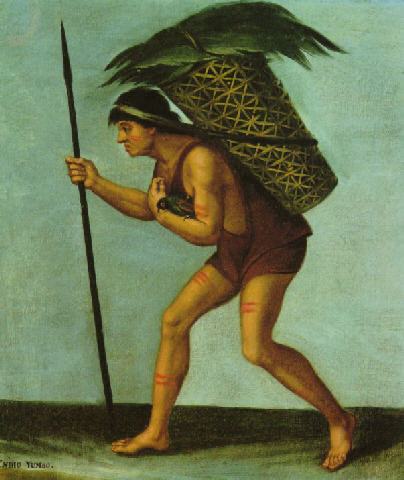Vicente Albán (Quito, 1725 – ¿?) fue un pintor de la Escuela Quiteña cuya obra se distinguió por unir el arte con el espíritu ilustrado del siglo XVIII. Provenía de una familia de artistas, entre los que sobresalían Francisco, Antonio y Juan Albán, y junto a su hermano Francisco realizó importantes lienzos de carácter religioso, como los episodios de la Vida de San Pedro Nolasco. Sin embargo, su trayectoria dio un giro decisivo con la Real Expedición Botánica del Nuevo Reino de Granada, donde en 1783 elaboró seis cuadros enviados a Madrid y hoy conservados en el Museo de América, marcando un hito al incorporar temas científicos y sociales al arte quiteño.
Estos cuadros, más allá de la religión, representaban con detalle a indígenas, mestizos y criollos en sus trajes típicos, así como productos naturales de la región, con el fin de aportar al trabajo clasificatorio de José Celestino Mutis. Para el historiador José María Vargas, Albán rompió con la tradición al enfocarse en la vida cotidiana y la diversidad social, elevando su obra a un registro visual etnográfico y científico. Además, fue un destacado retratista, como lo muestra su retrato del obispo de Quito, Blas Sobrino y Minayo. Con ello, Vicente Albán consolidó un legado que trascendió la pintura religiosa y se vinculó con el conocimiento ilustrado y la identidad cultural americana.

Vicente Albán (Quito, 1725–?) was a painter of the Quito School whose work was distinguished by its unification of art with the Enlightenment spirit of the 18th century. He came from a family of artists, including Francisco, Antonio, and Juan Albán, and together with his brother Francisco, he created important religious paintings, such as episodes from the Life of Saint Peter Nolasco. However, his career took a decisive turn with the Royal Botanical Expedition of the New Kingdom of Granada, where in 1783 he created six paintings sent to Madrid and now housed in the Museum of the Americas, marking a milestone in the incorporation of scientific and social themes into Quito art.
These paintings, beyond religion, detailed indigenous, mestizo, and criollo figures in their traditional costumes, as well as natural products from the region, all intended to contribute to the classification work of José Celestino Mutis. For historian José María Vargas, Albán broke with tradition by focusing on everyday life and social diversity, elevating his work to an ethnographic and scientific visual record. He was also a prominent portraitist, as evidenced by his portrait of the Bishop of Quito, Blas Sobrino y Minayo. With this, Vicente Albán consolidated a legacy that transcended religious painting and became linked to Enlightenment knowledge and American cultural identity.
